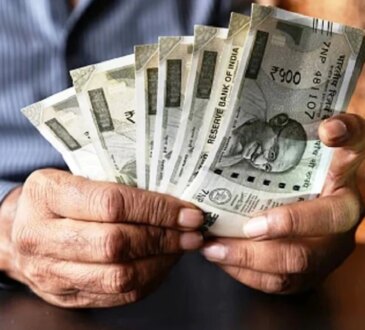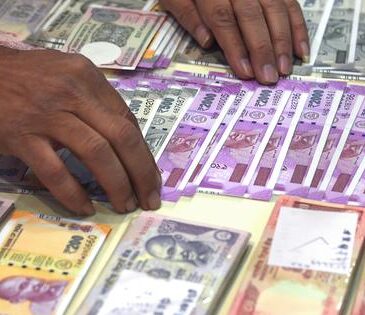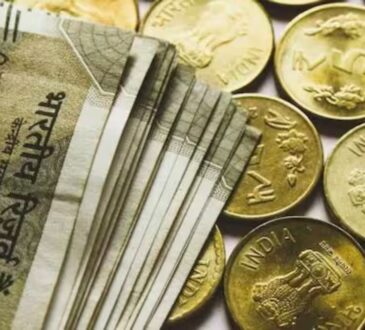HONG KONG – Asian currencies turbocharged by US dollar weakness are triggering central bank intervention to curb excessive gains.
The Hong Kong Monetary Authority on May 2 sold a record amount of local dollars to prevent its advance and protect the currency’s 42-year-old peg to the greenback. Taiwan’s central bank also intervened as its currency soared the most since 1988. The offshore yuan rallied to its strongest since November.
The volatility shows how an exodus from the world’s reserve currency can ripple through financial markets, as President Donald Trump’s shifting tariff policies fuel concern over a US recession. Last week, speculative traders became more bearish on the dollar than at any time since September, in a sign of growing reluctance among investors to hold US assets.
Asian currencies including the yen and yuan are benefiting from a combination of repatriation buying and as alternative investments amid the “sell America” wave. The strategy appeared to remain intact even as both Beijing and Washington seemed to be softening their stance on the trade war, with the former saying it is evaluating the possibility of talks with the United States.
“The natural way out of a lot of this trade tension is via the dollar balloon deflating,” said Brad Bechtel, global head of foreign exchange at Jefferies. Therefore, “loading up on a little downside for dollar versus Asia might make sense.”
Asia’s foreign-exchange market saw wild swings on May 2 with a Bloomberg gauge of the region’s currencies surging the most since 2022, while an indicator for returns of emerging-markets foreign-exchange closed at an all-time high.
Strength in emerging market currencies can help attract foreign inflows and make its imports cheaper, but it can hurt exporters by making their goods less competitive globally.
The Taiwan dollar led gains in Asia on May 2 with a 3 per cent advance, as foreign investors flooded into the local stock market amid bets US companies’ demand for the island’s semiconductors will remain strong. Currency gains snowballed as domestic exporters sold the greenback frantically on wagers it may keep falling, according to traders who asked not to be identified.
The rapid gains prompted the Taiwanese central bank to say it “entered the market at appropriate time” to adjust price moves. In the options market, traders became the most bullish on the island’s currency since 2008.
Similar to their Taiwanese peers, Chinese exporters also no longer see the dollar or Treasuries as a viable shelter amid trade conflicts. They have been shifting their strategy of hoarding dollars and are preferring the yuan instead, a Bloomberg survey showed.
“With the dollar under pressure, and the risk of lower rates given elevated recession risks in the US, the risk and reward of maintaining dollar deposits looks markedly different for Asian exporters,” Goldman Sachs analysts wrote in a note. Currencies including the yuan, Taiwan dollar and ringgit will likely advance.
Hong Kong’s currency also rallied on May 2 to the strongest it’s allowed to go within its trading band of 7.75 to 7.85 against the dollar. That pushed the city’s de-facto central bank to buy HK$46.5 billion (S$7.8 billion) worth of the greenback – the most on record for such an operation – to weaken its exchange rate.
Elsewhere in Asia, the South Korean won, Malaysian ringgit and Thai baht all soared more than 1 per cent. China’s onshore market was closed for holidays and will reopen on May 6.
Asian currency appreciation was also driven by investors reallocating funds away from the dollar. Last month, the greenback slumped in tandem with long-dated Treasuries and US stocks due to concern that Trump’s tariffs might stoke domestic inflation, hurt the economy and prevent the Federal Reserve from cutting interest rates.
Buying of Asian currencies intensified on May 2 on expectations that trade relations between the world’s top two economies might finally improve. That’s because China’s commerce ministry said it had noted senior US officials repeatedly expressing their willingness to talk to Beijing about tariffs.
Looking ahead, Wall Street still expects concern over the dollar to persist despite May 2’s stronger-than-expected US jobs data. The employment report was “a reflection of what might have been, rather than a sign of what will be,” Goldman Sachs said.
“We are bearish on the dollar as the US yield curve bull-steepens and investors continue to hedge US investments,” Morgan Stanley strategists led by David S. Adams wrote in a note. The firm is bullish on the euro and yen. BLOOMBERG
Join ST’s Telegram channel and get the latest breaking news delivered to you.




